Why Are My Windows Crying? A Pro’s Guide to Getting Rid of Condensation for Good
I’ve been in the building trade for a long, long time. And over the years, I’ve seen countless homeowners absolutely panic over their “crying windows.” They call me up, convinced their brand-new windows are leaking or that their house is about to crumble. But here’s the thing: nine times out of ten, it’s not a leak. It’s condensation.
In this article
- Okay, First Things First: Your 5-Minute Triage Plan
- The Science Behind Sweaty Windows (The Simple Version)
- Getting Control: The Pro’s Playbook for Moisture
- Your Action Plan: From Free Fixes to Smart Investments
- Troubleshooting: What to Look For
- The Really Serious Stuff: Your Health and Your Home
- Inspiration:
While a bit of fog on the glass might seem like no big deal, I’ve learned it’s often the canary in the coal mine—the first little warning sign of a bigger moisture issue lurking in your home. If you just ignore it, that simple water can lead to rotted wood, bubbling paint, and even serious mold problems that are a real threat to your health.
My goal here isn’t to scare you, but to share what I’ve learned from years on job sites and in building science courses. We’re going to dig into why your windows sweat, what you can do about it today, and when you might need to think about bigger fixes. This is all about understanding how your house works as a system to make it a healthier, drier place to live.

Okay, First Things First: Your 5-Minute Triage Plan
Are you reading this right now while staring at a puddle on your windowsill? Don’t panic. Here’s your immediate action plan:
1. Wipe It Dry. Seriously, this is non-negotiable. Grab a squeegee or a microfiber cloth and get that water off the glass and the frame. This stops the water from causing immediate damage. 2. Open the Blinds. Pull up those blinds and open the curtains all the way. Getting air to circulate against the glass helps warm it up and evaporate any leftover moisture. 3. Get Some Air Moving. Turn on a ceiling fan, or even a small portable fan, and aim it toward the window. Moving air is your best friend right now.
The Science Behind Sweaty Windows (The Simple Version)
Before we can fix this, we have to understand what’s actually happening. It all boils down to two things: how much moisture is in your air and how cold your windows are.
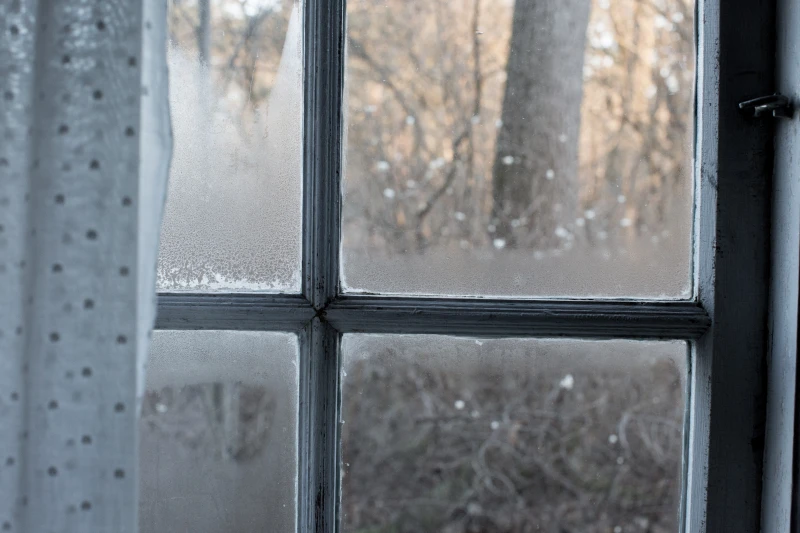
Think of the air in your house like a sponge. Warm air is a big, thirsty sponge that can hold a ton of water vapor. Cold air is a tiny, dense sponge that can’t hold much at all. The term you’ll hear is Relative Humidity (RH), which is just a percentage of how “full” that air-sponge is. When it hits 100%, the sponge is soaked and has to let go of the water.
Everyday life—cooking pasta, taking a hot shower, doing laundry, even just breathing—adds moisture to your indoor air. A family of four can easily release a couple of gallons of water vapor into the air every single day. Without good ventilation, that humidity gets trapped and starts to climb.
So, when that warm, moist indoor air bumps up against your cold window glass in the winter, the air right next to the glass gets chilled. It instantly becomes that tiny, dense sponge and can’t hold the moisture anymore. So, it dumps the water onto the glass. Voila, condensation.

You can’t manage what you don’t measure. So my first piece of advice is always the same: go buy a digital hygrometer. It’s the single best tool for this fight. You can find a good one for between $15 and $25 at any hardware store or online. A quick tip: get one with a min/max memory function so you can see how high the humidity gets overnight.
Getting Control: The Pro’s Playbook for Moisture
In the professional world, we don’t just wipe windows. We attack moisture at the source and make sure the house can breathe properly. It’s a one-two punch of ventilation and source control.
1. Let Your House Breathe (Strategic Ventilation)
Just cracking a window is a start, but we can be smarter about it. A great technique is “purge ventilation.” This just means opening windows wide in different parts of the house for about 10-15 minutes, once or twice a day. This creates a quick cross-breeze that swaps out all the stale, damp air for fresh, dry air without making your house freezing cold. The best time to do this is right after a shower or while you’re cooking.
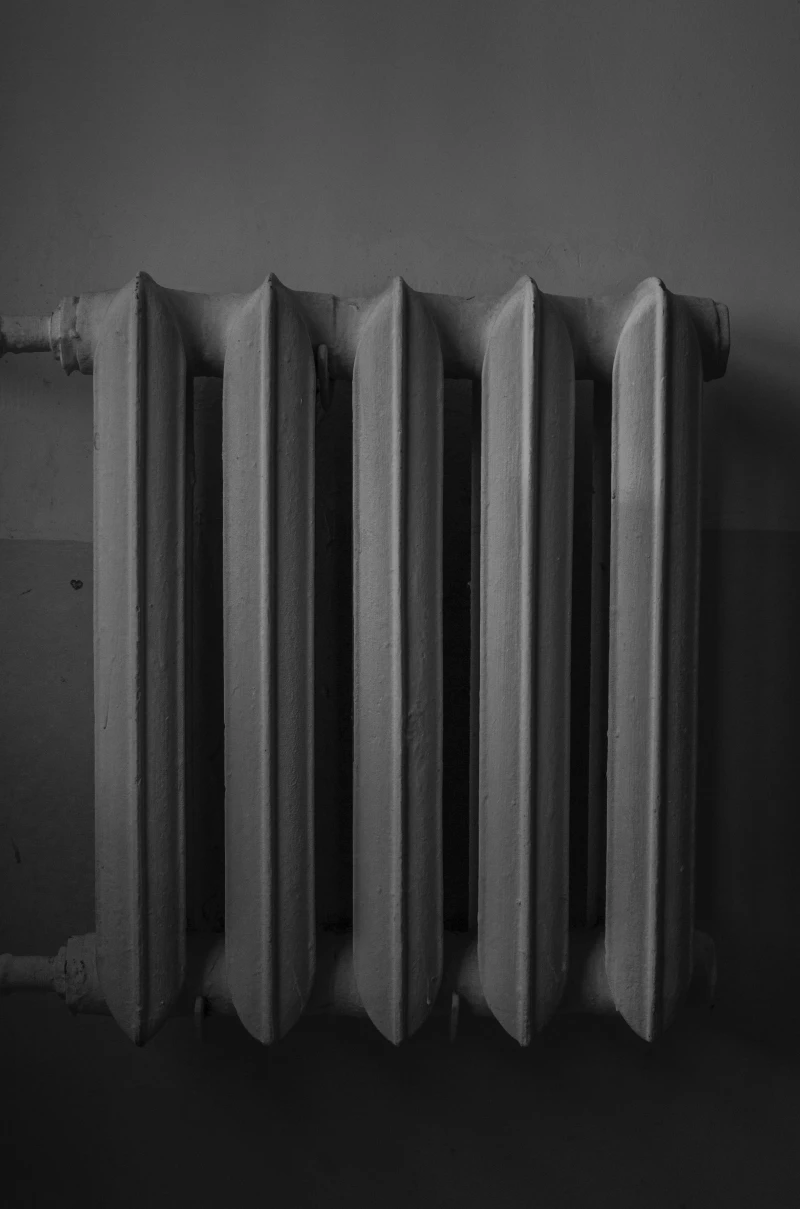
2. Stop Moisture at the Source
The easiest way to deal with moisture is to stop it from getting into your air in the first place. The two biggest villains are your kitchen and your bathroom.
Your Kitchen Fan: A lot of range hoods just suck air through a flimsy filter and blow it right back into your kitchen. They do next to nothing for moisture. A proper exhaust fan has to be ducted to the outside. When you’re cooking, run that fan. And a pro tip: leave it on for another 10-15 minutes after you’re done to clear out all the lingering steam.
Your Bathroom Fan: This is an absolute must-have. I’ve seen so much mold and rot in bathrooms without a working fan. It MUST vent to the outside, never into the attic—that’s just asking for big trouble with your roof. When buying a fan, look for two numbers: CFM (Cubic Feet per Minute) and Sones. You want at least 50 CFM for a standard bathroom, and a Sone rating of 1.0 or less for a fan that’s quiet enough that you’ll actually use it. A fantastic upgrade is a fan with a built-in humidistat; it automatically kicks on when things get steamy and turns off when they’re dry. Having one professionally installed can run you anywhere from $250 to $500, but it’s worth every penny.

Your Action Plan: From Free Fixes to Smart Investments
You can tackle this in stages. Start with the free and easy stuff first.
Level 1: Daily Habits (Cost: $0)
- Wipe and Dry: Every morning, make the squeegee your best friend. Get that water off the glass and sills.
- Use Your Fans: Run your bathroom fan for 20 minutes after every shower. Run your kitchen fan every time you boil water.
- Give Furniture Space: Pull sofas and beds a few inches away from cold exterior walls to let air circulate behind them.
Your 7-Day Humidity Challenge: Want to see a real difference? For one week, be absolutely religious about using your fans after every shower and cooking session. Keep an eye on your hygrometer. I bet you can drop your home’s average humidity by at least 10%.
Level 2: Low-Cost Tools & Upgrades
- Window Insulation Film: This stuff is genius, especially for old, drafty windows. It’s a thin plastic sheet you stick to the inside of your window frame (not the glass) with double-sided tape, then shrink tight with a hairdryer. It creates a pocket of insulating air that keeps the interior surface warmer and drastically reduces condensation. A kit for several windows usually costs under $20. And don’t worry, if you install it neatly, you can barely tell it’s there.
- A Good Dehumidifier: If your humidity is consistently over 50% even with good habits, a dehumidifier is your next best move. They typically cost between $150 and $300 for a solid portable unit. But which kind to get?
There are two main types. Compressor-based models are the most common; they work like a tiny refrigerator and are super-efficient in warmer rooms (think 65°F or 18°C and up), making them great for main living areas. Then you have desiccant models. These use a special material to absorb water and are champs in cooler temps, which makes them perfect for basements, garages, or chilly bedrooms. Whichever you choose, make sure it has an adjustable humidistat and an auto-shutoff feature for when the tank is full.
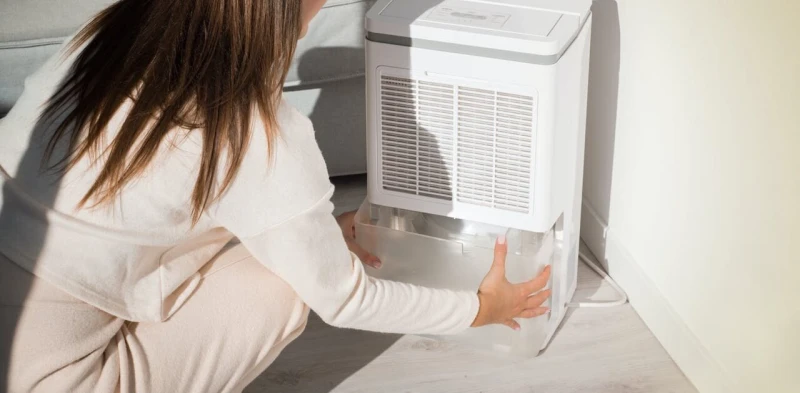
Level 3: The Big Guns (Major Investments)
- Better Windows: The ultimate fix is replacing old windows with modern, high-performance double- or even triple-pane units. They keep the interior pane of glass much warmer, often eliminating condensation entirely. When you’re shopping, look for the U-factor. You want that number to be as low as possible—in most climates, a U-factor of 0.30 or lower is a great target.
- When to Get an Energy Audit: If you’ve tried everything and you’re still losing the battle, it might be time for a professional home energy audit. An expert will use tools like a blower door and an infrared camera to find exactly where your home is losing heat and letting in air. It’s an investment, usually running between $300 and $700, but it gives you a scientific roadmap for what to fix.
Troubleshooting: What to Look For
Sometimes, condensation tells a specific story. Pay attention to where it shows up.
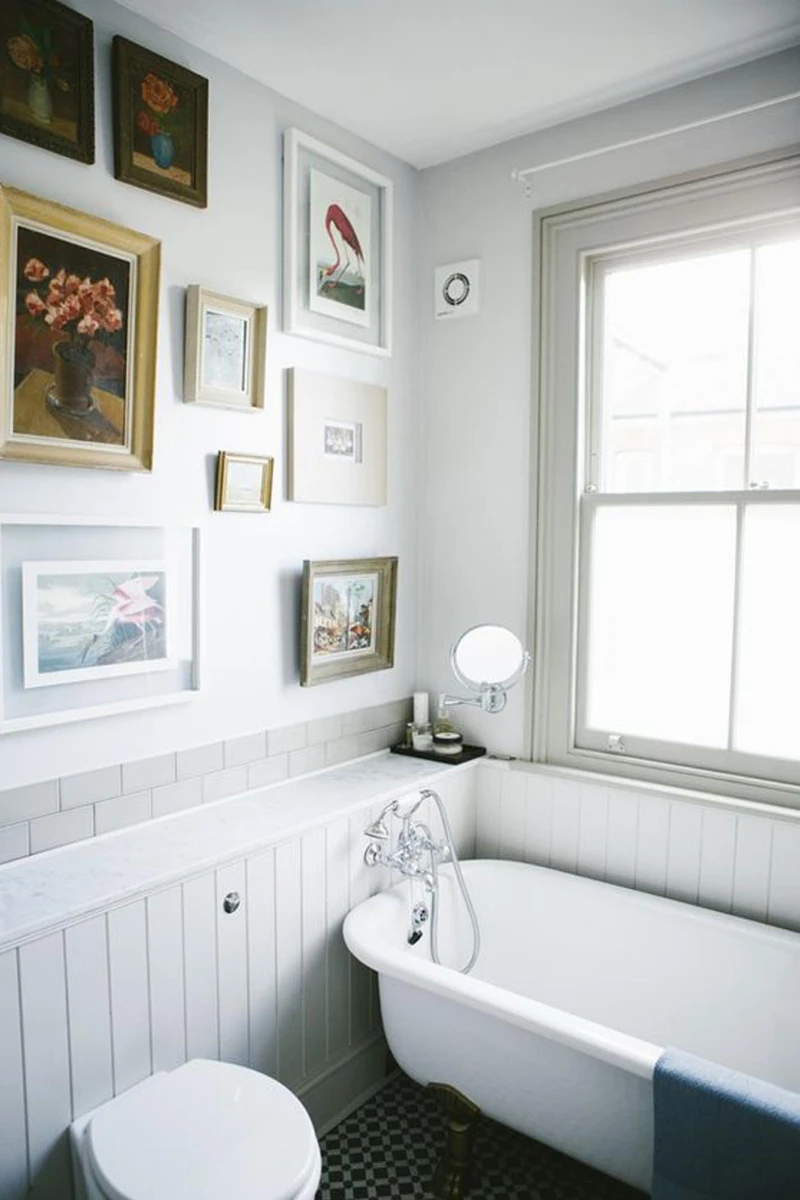
Fog Between the Panes?
If you see moisture sealed inside your double-pane window, that’s bad news. It means the seal has failed. The window has lost its insulating gas and is no longer energy-efficient. Unfortunately, this can’t be repaired properly. The only real solution is to replace the glass unit or the whole window. Heads up: I’d strongly advise against those “de-fogging” services that drill holes in your window. It’s a temporary cosmetic fix that ruins what’s left of the window’s performance.
Condensation on the Frames?
If you have metal frames, they get cold easily and will almost always sweat first. But if you have wood frames, persistent condensation is a huge red flag. I remember one house I worked on where the condensation had been ignored for years. The paint on the sills was bubbled up like a science experiment, and the wood underneath was soft as a sponge. We had to tear out the whole frame and part of the wall. That’s the kind of damage we’re trying to avoid.
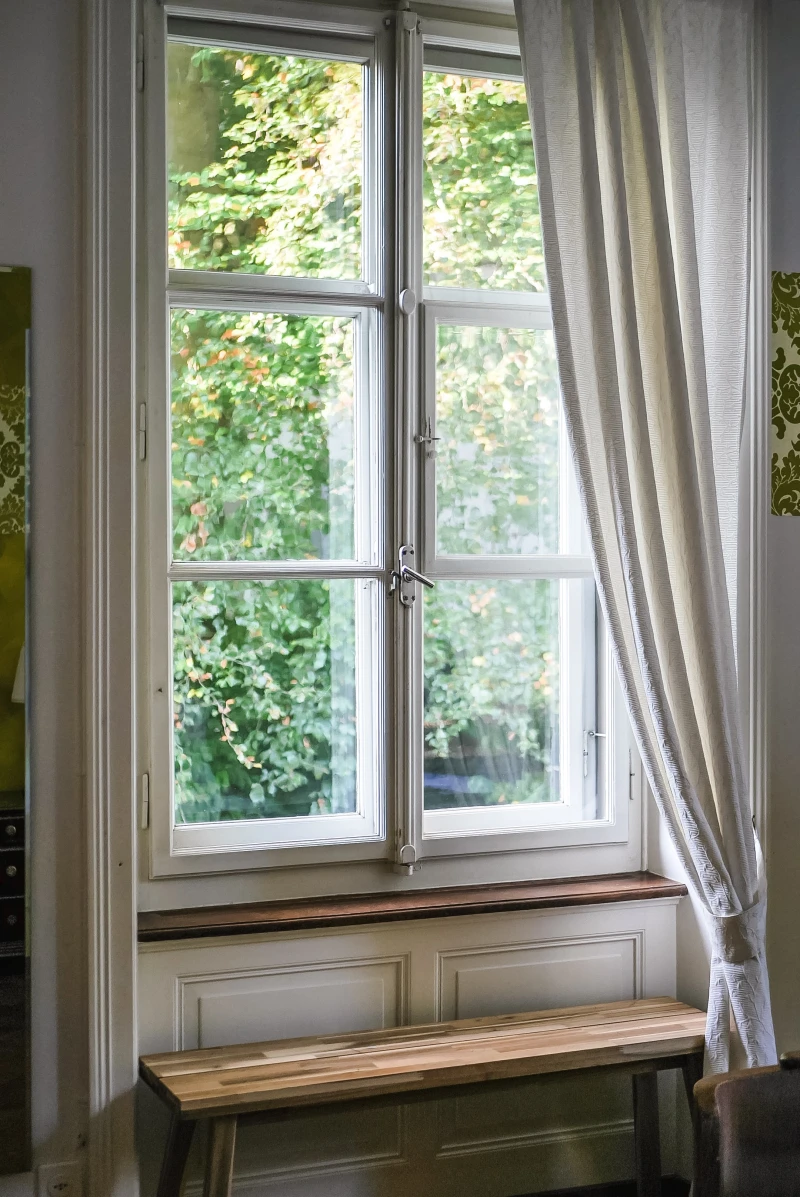
The Really Serious Stuff: Your Health and Your Home
My last piece of advice is the most important: please take this seriously. Chronic condensation is a threat to your property and your well-being.
The real danger is mold. Condensation is the water that wakes up dormant mold spores. Look for black or green specks or fuzzy patches on sills and drywall. By the way, there’s a reason I recommend cleaning small spots of mold on non-porous surfaces like vinyl frames with simple soap and water, not bleach. Bleach is a harsh chemical, and while it might kill surface mold, it doesn’t always handle the roots on porous materials. Good old soap and water does the trick without the nasty fumes. Just be sure to wear an N95 mask, gloves, and eye protection.
Look, every house is unique. This advice is a starting point based on my experience. If you have a severe, stubborn problem or suspect you have significant mold, the best thing you can do is call a certified home inspector or building analyst in your area. They can give you a tailored plan for your specific home.
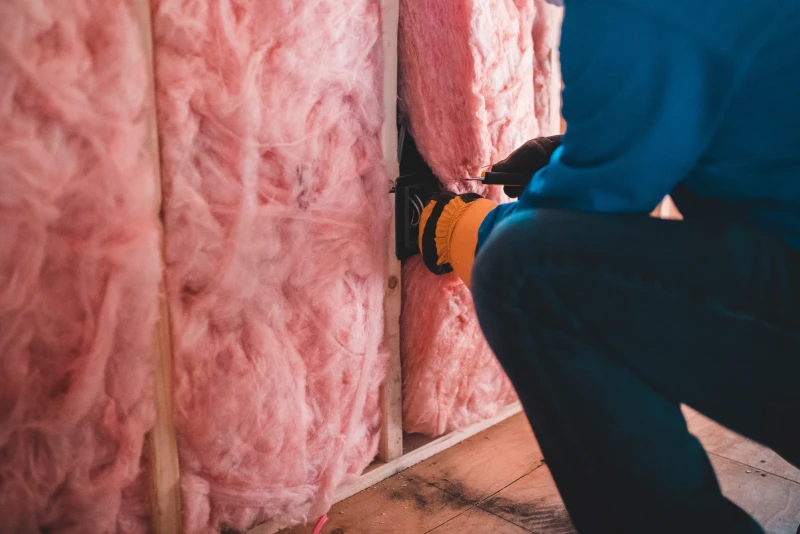
Managing condensation is all about finding balance. If you control moisture at the source, ventilate smartly, and keep your home well-insulated, you’ll be rewarded with clear windows and, more importantly, a safe and healthy place to call home.
Inspiration:
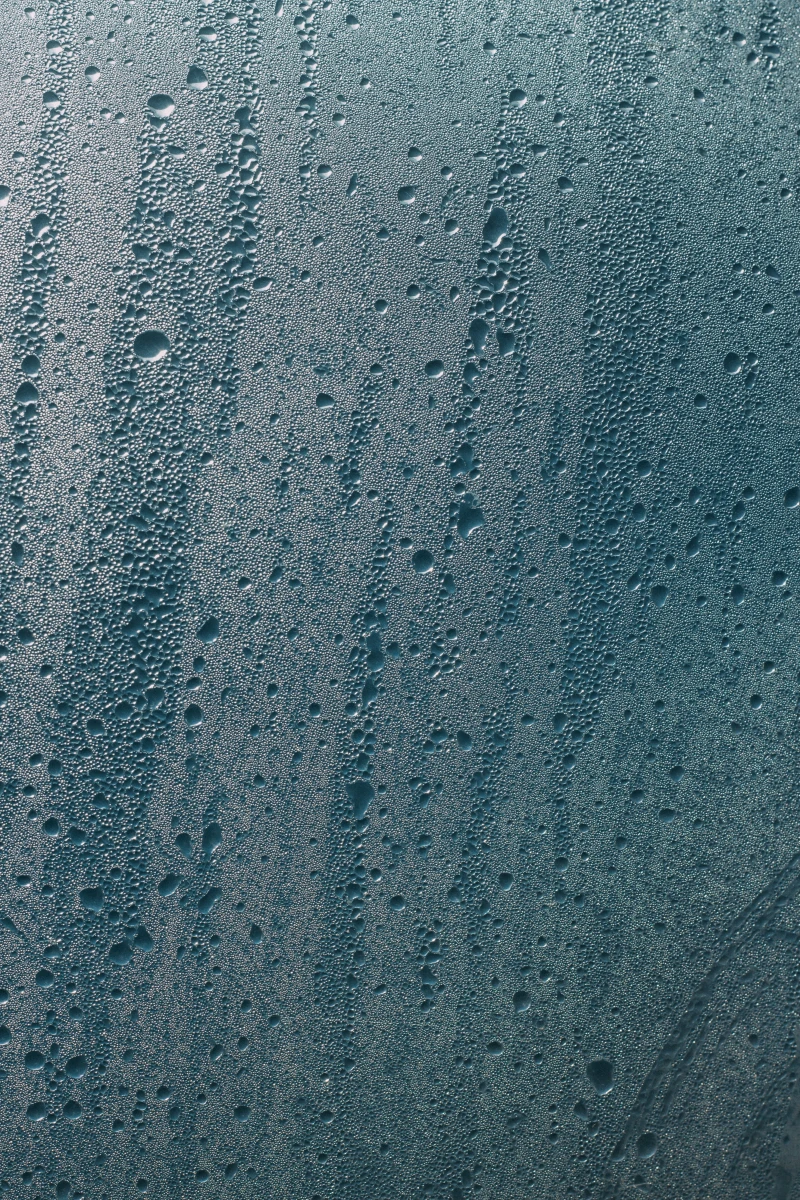
Refrigerant (Compressor) Dehumidifier: This is the most common type you’ll find. It works like a mini-fridge, pulling in damp air, cooling it to condense the moisture, and then collecting the water in a tank. They are highly effective in warmer rooms (above 15°C/60°F) and are great for main living areas or bedrooms during milder seasons. Brands like Frigidaire or Midea offer popular, energy-efficient models.
Desiccant Dehumidifier: Instead of cooling the air, this type uses a special moisture-absorbing material (the desiccant) on a rotating wheel. It’s a game-changer for cold spaces like garages, basements, or unheated utility rooms, as its performance doesn’t drop in lower temperatures. Look at brands like Meaco, which are well-regarded for their effectiveness in cool, damp UK-like climates.
So, which to choose? If your condensation problem is worst in your main, heated living space, a refrigerant model is likely your best bet. For a cold, damp basement or a chilly spare room, a desiccant model will perform much more efficiently.










